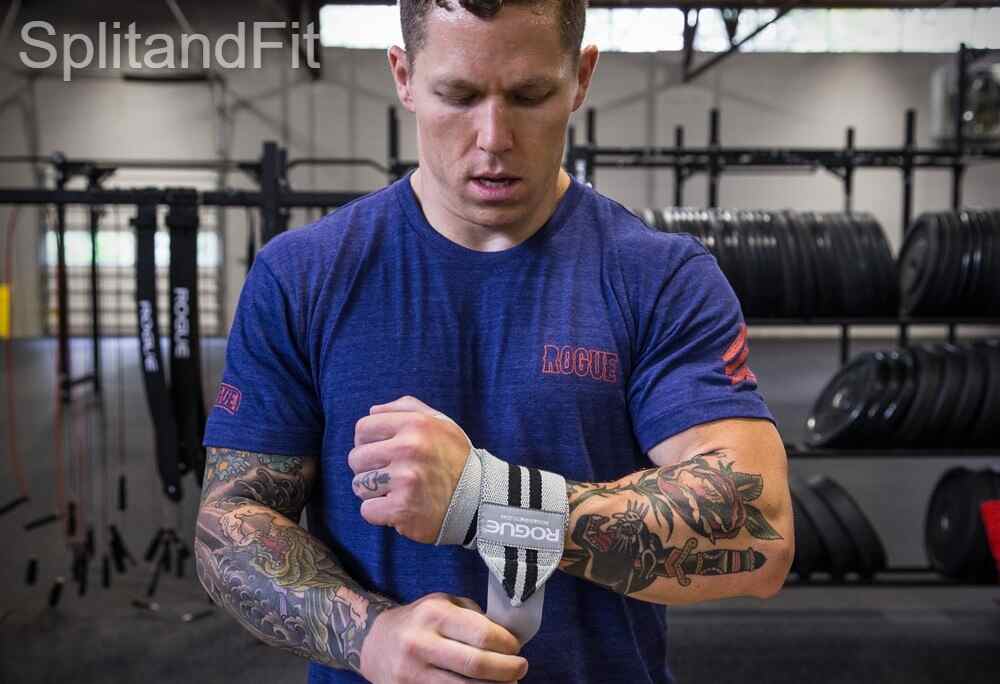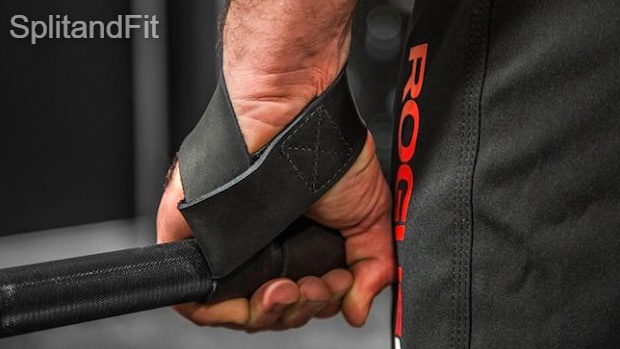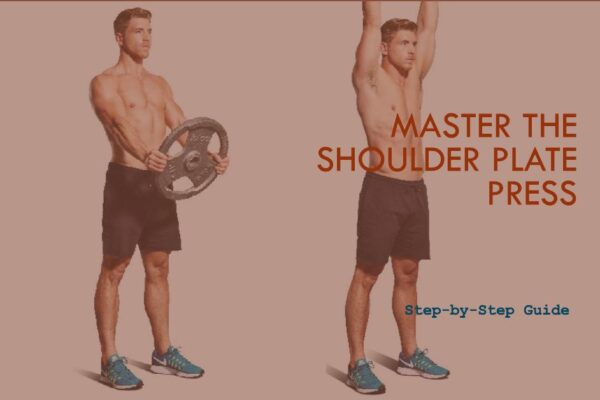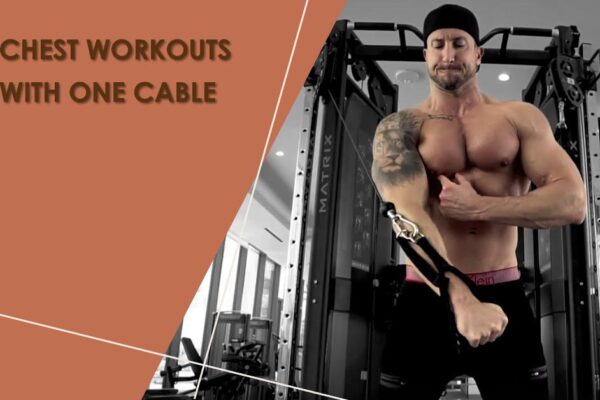When it comes to weightlifting and strength training, the choice between wrist wraps and wrist straps can significantly impact performance, safety, and comfort during workouts. “Wrist Wraps vs Wrist Straps” is a common debate among fitness enthusiasts and athletes seeking optimal support for their wrists.
Wrist wraps are designed to provide stability and compression to the wrist joint, aiding in injury prevention and supporting heavy lifts. On the other hand, wrist straps offer a secure grip on the bar or weight, reducing strain on the forearm muscles and allowing for more controlled lifting. Understanding the differences and benefits of each accessory is crucial for individuals looking to maximize their training sessions while minimizing the risk of wrist-related injuries.
Difference between Wrist Wraps vs Wrist Straps
This comparison table highlights the distinct functions and benefits of both wrist wraps and wrist straps, aiding individuals in making an informed choice based on their specific training needs and exercise preferences.
| Aspect | Wrist Wraps | Wrist Straps |
|---|---|---|
| Primary Function | Provides wrist stability and support during heavy pushing exercises | Aids grip strength and control during heavy pulling movements |
| Targeted Exercises | Ideal for pressing movements, overhead lifts | Beneficial for heavy pulling exercises such as deadlifts and rows |
| Support and Stability | Offers stabilization to the wrist joint, minimizing excessive flexion | Focuses on enhancing grip on the bar or weight, reducing strain on forearms |
| Injury Prevention | Aims to prevent wrist injuries and strain | Reduces the risk of forearm and grip-related strains |
| Usage Preference | Preferred for exercises requiring wrist support | Favoured for workouts demanding enhanced grip strength |
| Application | Wrapped around the wrist for stability | Wrapped around the bar or weight for improved grip |
| Impact on Performance | Enhances wrist stability and reduces the risk of injury | Improves grip strength and control, allowing for heavier lifting |
What are Wrist Wraps?
Wrist wraps are supportive accessories commonly used in weightlifting and strength training exercises. They typically consist of a long strip of material, such as cotton or elastic, and are designed to provide support and stability to the wrist joint during various lifting movements.
Wrist wraps are utilized to minimize excessive flexion in the wrist, offering additional stabilization and injury prevention during heavy pushing exercises, overhead lifts, and other weightlifting activities. Additionally, they are recommended for heavy sets and high loads, aiming to enhance wrist stability and reduce the risk of injuries during intense workouts.

When and Why to Use Wrist Wraps?
Here are some key points on when and why to use wrist wraps:
- Heavy Lifting:
- When: Engaging in weightlifting exercises, especially heavy compound movements like deadlifts, bench presses, and overhead presses.
- Why: Wrist wraps provide support and stability to the wrist joints, reducing the risk of injury during heavy lifts.
- Rehabilitation:
- When: Recovering from a wrist injury or strain.
- Why: Wrist wraps can help limit the range of motion and provide a supportive brace, aiding in the healing process and preventing further stress on the injured area.
- Preventing Hyperextension:
- When: Performing exercises that involve extending the wrist backward, such as front squats or Olympic lifts.
- Why: Wrist wraps can limit excessive extension, protecting the wrist from hyperextension injuries.
- Increased Repetitions:
- When: During high-repetition sets or extended workout sessions.
- Why: Wraps offer additional wrist support, preventing fatigue and reducing the risk of overuse injuries, allowing for more controlled and efficient movement.
- Wrist Stability:
- When: Individuals with inherently weak or unstable wrists.
- Why: Wrist wraps enhance stability, providing a more secure foundation for various exercises, ensuring proper form and reducing the likelihood of injuries.
- Powerlifting Competitions:
- When: Participating in powerlifting competitions.
- Why: Many powerlifting federations allow the use of wrist wraps to provide competitors with added wrist support during heavy lifts, contributing to improved performance.
- Preventing Joint Strain:
- When: Engaging in exercises that put significant stress on the wrist joints, such as handstands or heavy dumbbell work.
- Why: Wrist wraps distribute force more evenly, reducing the strain on the joints and minimizing the risk of long-term damage.
- Customized Tension:
- When: When lifters prefer a customized level of wrist support.
- Why: Adjustable wrist wraps allow users to control the tightness, catering to individual preferences and specific workout needs.
Remember, while wrist wraps can be beneficial in certain situations, it’s essential to strike a balance and not become overly reliant on them. Proper warm-up, technique, and addressing underlying mobility issues are crucial aspects of overall joint health and injury prevention.
Benefits of Wrist Wraps
The benefits of wrist wraps in weightlifting and strength training include:
- Wrist Stability: Wrist wraps help provide stability to the wrist joint during lifting sessions, especially when training with heavier loads, thus aiding in injury prevention.
- Enhanced Grip and Strength: By using wrist wraps, individuals can better stabilize barbell weight and prevent excessive strain on other muscles, allowing for stronger, more controlled lifting movements. Moreover, wrist wraps to aid in gripping more weight during exercises such as deadlifts and rows, contributing to improved hand strength.
- Reduced Fatigue: The use of wrist wraps can lead to a reduction in fatigue during repetitive or heavy lifting exercises, thus potentially increasing the overall volume of training.
- Lifting Performance: Wrist wraps may allow individuals to lift more weight than usual, as the material strap wrapped around the bar and wrist helps redistribute pressure, potentially enhancing lifting performance.
- Universal Usage: Wrist wraps can be used by individuals of all ages and fitness levels to improve their training, making them a versatile accessory for weightlifting and strength exercises.
These benefits highlight the valuable role of wrist wraps in weightlifting and strength training, emphasizing their positive impact on wrist stability, grip strength, fatigue reduction, and overall lifting performance.
How to use Wrist Wraps
It’s important to note that while wrist wraps can provide support, they should not be so tight as to cause numbness or discomfort. If you experience persistent pain or discomfort, consult with a healthcare professional. Additionally, do not use wrist wraps as a substitute for proper technique and form during exercises.
Here’s a step-by-step guide on how to use wrist wraps properly:
Step 1: Choose the Right Wrist Wraps
- Select wrist wraps of an appropriate length and material. Longer wraps generally provide more support, and materials like elastic or cotton blends are common choices.
Step 2: Position the Wrist Wrap
- Start with one wrist wrap. Hold the thumb loop and let the rest of the wrap hang down.
Step 3: Place the Loop Over Your Thumb
- Insert your thumb through the loop, making sure the wrap hangs down along the inside of your wrist.
Step 4: Wrap Around the Wrist
- Bring the wrap around the back of your hand, going across the top of your wrist joint. Keep the wrap snug but not too tight at this stage.
Step 5: Wrap Around Again
- Continue wrapping around your wrist for a second or third time, depending on the length of the wrap. Make sure to cover the entire wrist joint.
Step 6: Adjust Tension
- Once you’ve wrapped around your wrist, pull the wrap tight enough to provide support but not so tight that it cuts off circulation. The tension should be even throughout the wrap.
Step 7: Secure the Velcro
- Most wrist wraps have a Velcro strip at the end. Pull the wrap over the front of your wrist, securing the Velcro tightly for a secure fit.
Step 8: Repeat for the Other Wrist
- If you’re using a pair of wrist wraps, repeat the process for the other wrist.
Step 9: Ensure Proper Positioning
- Check that the wraps are snug and positioned correctly. They should provide support to the wrist joint without causing discomfort or restricting blood flow.
Step 10: Warm-Up and Adjust
- Perform a light warm-up for your wrists, moving them in different directions to ensure flexibility. If needed, adjust the tension of the wraps for comfort and support.
Step 11: Remove After Use
- After your workout or activity, carefully remove the wrist wraps by undoing the Velcro and unwrapping them from your wrists.
Common Mistakes to Avoid in Write Straps Usage
When using wrist wraps, it’s important to avoid common mistakes that could impact their effectiveness. Here are some key mistakes to steer clear of:
- Over-Tightening: While the wraps need to provide support, over-tightening them can restrict blood flow and cause discomfort. Ensure a snug fit without cutting off circulation.
- Improper Positioning: Placing the wraps too high or too low on the wrist can compromise their ability to offer adequate support. Position them correctly at the base of the thumb and around the wrist joint.
- Dependency: Relying excessively on wrist wraps during every workout may hinder the development of natural wrist strength. Reserve the use of wraps for heavier lifts and limit dependency on them.
- Incorrect Application: Failing to wrap the wrist wraps properly, such as not securing them firmly or leaving them too loose, can decrease their effectiveness in providing stability and support.
By being mindful of these mistakes, individuals can maximize the benefits of wrist wraps while minimizing the risk of potential drawbacks.
What are Wrist Straps?
Wrist straps, also known as wrist wraps, are supportive accessories commonly used in weightlifting and strength training exercises. They typically consist of a long strip of durable material, such as cotton or nylon, that is wrapped around the wrist to provide support and stability during heavy lifting movements.
Overall, wrist straps are designed to aid weightlifters in maintaining proper wrist alignment, reducing fatigue, and ultimately enhancing their performance during strength training exercises.

When and Why to Use Wrist Straps?
Here are some key points on when and why to use wrist straps:
- Heavy Pulling Movements:
- When: Performing heavy pulling exercises like deadlifts, rows, or pull-ups.
- Why: Wrist straps help maintain grip strength by reducing the reliance on the forearm muscles, allowing you to focus more on the targeted muscle groups.
- High-Volume Training:
- When: Engaging in workouts with high repetitions or extended duration.
- Why: Wrist straps can alleviate grip fatigue, enabling you to complete more reps without compromising form or grip strength.
- Focus on Specific Muscle Groups:
- When: Targeting specific muscle groups without being limited by grip strength.
- Why: Straps shift the emphasis from the forearms to the targeted muscles, allowing for more effective isolation and engagement of the muscles being worked.
- Wrist Pain or Weakness:
- When: Experiencing wrist pain or weakness during exercises.
- Why: Wrist straps provide additional support, reducing stress on the wrists and allowing individuals with existing issues to continue training safely.
- Improving Pulling Form:
- When: Learning or refining proper pulling form.
- Why: Straps can assist beginners in maintaining proper form without grip strength limitations, promoting better movement patterns.
- Enhancing Progressive Overload:
- When: Progressing to heavier weights in resistance training.
- Why: Straps help bridge the gap during strength progression, ensuring that the limiting factor is muscle strength rather than grip strength.
- Injury Prevention:
- When: Recovering from hand or wrist injuries.
- Why: Wrist straps allow individuals to continue training while minimizing stress on the injured area, promoting rehabilitation and preventing further damage.
- Assistance in Grip Challenges:
- When: Facing challenges with grip strength due to factors like sweaty hands or slippery equipment.
- Why: Straps provide a secure grip, overcoming environmental factors that could otherwise compromise your ability to hold onto the weight.
- Versatility in Exercises:
- When: Engaging in exercises where a secure grip is crucial, such as heavy shrugs or farmer’s walks.
- Why: Wrist straps enhance grip stability, ensuring safety and control during exercises that involve holding or carrying heavy loads.
- Individual Preference:
- When: Based on personal preference or comfort.
- Why: Some individuals simply prefer using wrist straps to optimize their training experience, especially when focusing on hypertrophy or specific muscle targeting.
Remember, while wrist straps can be a valuable tool, it’s essential to strike a balance and not rely on them exclusively. Proper grip training and forearm strength development should still be prioritized for overall functional strength.
Benefits of Wrist Straps
wrist straps offer several benefits for weightlifters and individuals engaging in strength training exercises. Here are some of the key advantages to consider:
- Enhanced Wrist Stability: Wrist straps help provide stability to the wrist joint, particularly when training with heavier loads, enabling more advanced lifters to benefit from increased stability and reduced risk of injury.
- Increased Lifting Capacity: The use of wrist straps allows for lifting more weight than usual, as the material strap wrapped around the bar and wrist helps redistribute the weight, potentially leading to improved strength gains over time.
- Improved Barbell Weight Stabilization: Wrist straps aid in better-stabilizing barbell weight, preventing the sapping of strength from other muscle groups during corrective movements, ultimately contributing to better lifting technique and efficiency.
- Increased Grip Strength: By allowing individuals to fatigue the target muscle without worrying about grip failure, wrist straps may contribute to better workout performance and improved grip strength.
- Support for Grasping Movements: Wrist straps may help individuals strengthen their hands for workouts that involve grasping, such as deadlifts and rows, contributing to enhanced grip strength and more effective execution of these exercises.
By incorporating wrist straps into their routines, individuals can benefit from improved stability, increased lifting capacity, and enhanced support for various weightlifting and strength training exercises.
How to Use Wrist Straps?
Here’s a step-by-step guide on how to use wrist straps properly:
Step 1: Choose the Right Wrist Straps
- Select wrist straps designed for your specific activity or preference. Straps may vary in length, material, and closure mechanisms.
Step 2: Unroll the Straps
- If your wrist straps are rolled up, unroll them to reveal the full length.
Step 3: Identify the Loop End
- Locate the looped end of the strap. This is the part that will go around your wrist.
Step 4: Thread Through the Loop
- Insert your hand through the loop, making sure the strap sits comfortably across the base of your palm.
Step 5: Position the Strap
- Adjust the strap so that it lies flat across the back of your hand and wraps around your wrist.
Step 6: Wrap Around the Wrist
- Take the free end of the strap and wrap it around your wrist. The number of wraps will depend on the length of the strap and your personal preference.
Step 7: Secure the Strap
- Once wrapped, use the closure mechanism to secure the strap. Most wrist straps have a Velcro or buckle closure that should be tightened for a snug fit.
Step 8: Adjust Tension
- Ensure that the tension is comfortable but firm. The strap should provide support without cutting off circulation or causing discomfort.
Step 9: Loop Around the Bar or Equipment
- If you’re using the wrist straps for lifting, loop the free end of the strap around the bar or equipment you are lifting. This is usually done for pulling movements like deadlifts or rows.
Step 10: Tighten Around the Bar
- Securely tighten the strap around the bar, ensuring a firm grip. This allows the strap to transfer the load from your grip to your wrist.
Step 11: Check and Repeat
- Double-check that the straps are properly secured and that you feel comfortable with the tension. Repeat the process for the other wrist if using a pair of straps.
Step 12: Remove After Use
- After your workout or activity, carefully unwrap the strap from the bar and then undo the closure mechanism to remove the strap from your wrist.
Step 13: Store Properly
- Roll up or fold the wrist straps and store them in a cool, dry place. This helps maintain their integrity for future use.
Remember, wrist straps are a tool to enhance your training, not a substitute for developing grip strength. Use them judiciously and focus on improving your natural grip strength through targeted exercises as well.
Common Mistakes to Avoid in Wrist Straps Usage
When using wrist straps for weightlifting and strength training, it’s important to be aware of common mistakes to avoid for effective and safe usage. Here are some common mistakes and ways to avoid them:
- Incorrect Wrist Strap Placement: Placing the wrist strap incorrectly, such as wearing it too low on the wrist, can compromise its effectiveness. To avoid this mistake, ensure that the wrist strap is positioned high enough on the wrist to provide optimal support.
- Worn or Disconnected Wrist Straps: Failing to wear the wrist strap properly or allowing it to become disconnected during lifting can lead to reduced stability and potential safety hazards. To avoid this, always ensure that the wrist strap is worn securely and correctly fitted to provide the intended support.
- Overdependence on Wrist Straps: Overusing wrist straps for every exercise can hinder the development of forearm and grip strength. It’s essential to avoid relying excessively on wrist straps, as this can impede the natural development of these supporting muscles.
- Causing Joint Laxity: Misusing wrist straps, such as lifting with them for the wrong reasons, can potentially cause ligamentous, joint capsule, and overall joint laxity. It’s crucial to understand the proper reasons and techniques for using wrist straps to avoid potential joint concerns.
By being mindful of these common mistakes and taking proactive measures to avoid them, individuals can make the most of wrist straps in their training routines while minimizing the risk of potential drawbacks.
Tips to Maximize the Results in Wrist Wraps vs Lifting Straps
Here are 6 tips to maximize the results when using wrist wraps vs wrist straps:
- Use Wrist Wraps for Heavier Loads: Consider using wrist wraps when lifting above 80% of your one-rep max or during sessions that involve consistently heavy lifting. This can help provide additional support and stability for your wrists.
- Leverage Wrist Straps When Grip Strength is a Limiting Factor: If grip strength becomes a limiting factor during your lifts, wrist straps can help address this issue by providing enhanced grip support, allowing you to focus more on the targeted muscle groups.
- Understand the Purpose of Wrist Wraps: Wrist wraps primarily focus on stabilizing and supporting the wrists by compressing the joints, making them particularly useful for pressing exercises where wrist bending is expected.
- Avoid Overdependence on Wrist Wraps: While wrist wraps can provide support, it’s important not to become overly reliant on them. Consider using wrist wraps only when necessary to avoid hindering the natural development of forearm and grip strength.
- Utilize Wrist Straps Strategically: To maximize results, consider using wrist straps during the final sets of an exercise, especially when grip strength is reduced due to fatigue. This strategic use can help maintain lifting performance as fatigue sets in.
- Choose the Right Gear for Your Specific Needs: Understand the key differences between wrist wraps and wrist straps, and choose the gear that aligns with your specific fitness goals and the demands of your training routine.
By applying these tips, individuals can effectively maximize the benefits of wrist wraps and wrist straps in their weightlifting and strength training regimens.
Frequent Question Answers
| Question | Answer |
|---|---|
| What are the disadvantages of using wrist wraps? | Overusing wrist wraps can result in weak wrist joints and connective tissues. Incorrect use of wrist wraps can alter form and increase the risk of sports-related injury. Over-reliance on wrist wraps can lead to wrist instability. |
| When should I wear wrist wraps? | Wrist wraps are recommended for heavier loads, typically above 80% of your one-rep max, or during sessions involving consistently heavy lifting. |
| Do I really need wrist straps? | Wrist straps can be useful when grip strength becomes a limiting factor during lifts. However, it’s important not to become over-reliant on them, especially for developing forearm and grip strength. |
| Do wrist wraps improve grip? | Wrist wraps primarily focus on stabilizing and supporting the wrists, they do not directly improve grip strength. However, they can indirectly support grip by providing wrist stability during heavy lifting. |
| Is it worth using wrist wraps? | Using wrist wraps strategically for heavier loads and when grip strength is a concern can be worth it. However, it’s important to avoid overdependence on them to ensure natural development of forearm and grip strength. |
| At what weight should you use wrist wraps? | Wrist wraps are typically recommended for use when lifting above 80% of your one-rep max or during consistently heavy lifting sessions. |
| Can I wear wrist straps all day? | It’s not recommended to wear wrist straps all day, as overuse can potentially lead to over-reliance and reduced natural development of forearm and grip strength. |
| Can beginners use wrist straps? | Beginners can use wrist straps, but it’s important for them to understand the proper reasons and techniques for using wrist straps and to avoid over-reliance on them. |
| Can you sleep with a wrist strap? | It’s not necessary or recommended to sleep with a wrist strap, as they are intended for use during weightlifting and strength training activities. |
Conclusion
Wrist wraps are ideal for individuals seeking increased wrist stability and control during pressing exercises, while wrist straps are better suited for those who need additional grip support when lifting heavier weights. Understanding the distinct purposes of wrist wraps and wrist straps can help individuals make informed decisions about which gear to incorporate into their weightlifting and strength training routines.






Leave a Reply